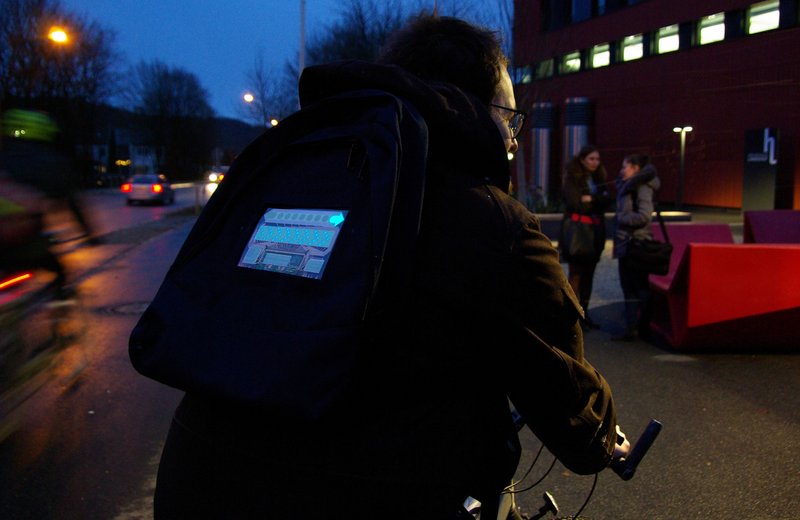It is easy to be overlooked when walking or cycling in traffic in the dark. Prof. Dr Artem Ivanov from Landshut University of Applied developed smart jackets with integrated displays that function as indicators or brake lights to enhance safety for these people as part of the "Smart Foil Display" project. Test subjects will conduct field tests for one year to determine how reliably the technology used works in everyday life and how durable the displays are in continuous use. The professor from the Electronics and Systems Integration Research Group is now presenting the first results of these tests: "A positive trend regarding the stability of the display system was already shown during the tests. There have only been a few system failures so far."
Stable system – sufficient service life
During the test phase, twelve people have been testing the jackets in everyday use since March 2019 and are keeping records of when and under what conditions malfunctions occur. The tests are currently being interrupted due to the corona crisis. However, the first interim results have already been evaluated and will be published in the conference proceedings for the 2nd Electronics and System Integration symposium, "Intelligente Systeme und ihre Komponenten:" Forschung und industrielle Anwendung" (Intelligent systems and their components: Research and Industrial Application, www.symposium-esi.de). "The displays proved to be very stable against the environmental influences and mechanical stresses associated with everyday use. The service life is also sufficient based on our considerations," Ivanov says pleased. The maximum wearing time was almost 200 hours and the maximum operating time 75 hours.
Presentation of the final results in October
If malfunctions occurred, the causes (e.g. corrosion caused by moisture) could be clarified and in some cases immediately eliminated by repairs. Ivanov is planning to continue the field tests until October 2020. At the same time, he is examining the luminosity of the displays in endurance tests and evaluating this data. Ivanov will then present the results at the LOPEC conference, which is considered the most important congress in the field of printed electronics.
Control by Bluetooth
The indicator system consists of a luminous, flexible, printed electroluminescent display (ELD) with a pixel matrix. "The displays can be produced inexpensively by screen printing on plastic substrates and are currently the only technological possibility to produce self-luminous flexible displays with a total thickness of just 0.1 millimetres in the printing process," explains Ivanov. The system is controlled by a Bluetooth low energy module, either via electronics in the handlebars or via the smartphone attached to the handlebars. Depending on the command, an illuminated arrow on the display indicates the direction in which the cyclist wants to turn. The lettering BRAKE or any other text can also be displayed. The displays are attached to the jackets by means of press studs or zips and can be easily removed for cleaning. The same principle can also be used for bags or rucksacks.
Easy to produce
Ivanov is capturing the current spirit of the times with his project for more safety in road traffic. The car manufacturer Ford is currently developing an LED jacket that is intended to improve communication using light signals. Ivanov explains the difference: "Although this LED jacket is brighter than ours, it is more difficult to produce and cannot be used as flexibly. By producing the displays using screen printing, the costs are less than ten euros per display, even for small quantities." This means that the financial risks are also manageable for start-ups.
Photo: Landshut University of Applied Sciences
(free for use if source is indicated)

